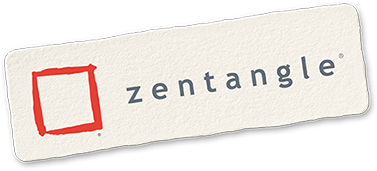Molly writes...
I grew up in the 1980’s and 1990’s. When I look back at the games, the music, the television, and movies of this time, I realize that it culturally shaped my childhood. I spent a lot of my time with an older brother. When we played or hung out together, he always got to pick what we would do. Although not what I would have picked, I was just happy to be invited.
One movie that I remember us watching and over and over was, “The Karate Kid”. We loved that movie. When you are young you don't pay attention to all the details of why something is special or significant, you just know you love it. You may not register the lessons learned, even though you may have indeed learned them. Accessibility to movies was different back then and there were fewer movies to choose from, kids would often watch the same movies repeatedly. Most of the kids our age could recite lines from their favorite movies. The Karate Kid was one of those movies and one line that was quoted often was, “Wax on. Wax off.” All the kids would say it all the time. Never really thinking about what it meant.
I recently rewatched the movie with my daughter. It is fascinating watching something you viewed many times as a child. I had not seen it for many years and watching it again as an adult was interesting and eye opening. In fact, it not only blew my mind a bit, but it made me admire the movie even more.
My first feelings were of course those of nostalgia. The warmth of fond memories flooding in of being a kid and how excited we would get to watch a movie. I could practically taste the Coca Cola and Doritos that would almost always complete the experience. I remember how hard it was for my brother and I to agree on what we would watch. I would be yearning for a princess movie, only to always go with his choice. I assumed, in this case, that I would hate such a movie as one called “The Karate Kid”, only to be proven wrong, so very wrong. I loved the movie and it seemed that everyone else at that time did as well. What was it about the film that was so likeable?
Once I digested the nostalgia of the film, I shifted gears from focusing on what the movie meant for me then, to what the movie meant for me now. Why was I so particularly taken by it now? There was something about it that struck me. I knew that I really enjoyed it as a kid, but I never really thought about the message behind the story and the way the film delivered it so eloquently. Then it hit me, like a karate chop to the gut, that this movie was about Zentangle. Ok, well not exactly, but it was about Zentangle, for me.
I immediately went back and rewatched a few select scenes again. Eagerly digesting all the parallels. There were so many overlaps in the lessons learned and philosophies shared. Did Mr. Miyagi practice The Zentangle Method too? Watching how Mr. Miyagi so carefully, patiently, and thoughtfully shares his knowledge of the art of karate with the young Daniel was like listening to Bijou. Slow down. Deliberate strokes. Anything is possible one stroke at a time. It all seemed to align.
I then watched what is probably the most famous scene in the whole movie. It is a scene where Mr. Miyagi tells Daniel that he will teach him karate and then gives Daniel a list of chores to do. Each chore is basic and repetitive. The tasks are long and require focus. Daniel becomes frustrated in the work, thinking it is not teaching him anything about karate. After a long series of workdays, Mr. Miyagi patiently demonstrates the importance of the basic strokes.
Show me sand the floor.
Show me wax on, wax off.
Show me paint the fence.
Show me paint the house.
With the Zentangle Method, we say that all tangles are constructed of basic strokes. We use the term “icso” to describe them. They are a dot, a line, a “C” shape, a “S” curve, and an orb. If you can create these forms, you are then able to create with the Zentangle Method.

With a regular Zentangle practice, repetition and focus, these strokes become stronger, more fluid and a part of your tangled artistry. Seemingly complex compositions can all be broken down into basic strokes. Each artistic journey begins and ends with basic strokes. Your Zentangle practice is all about basic strokes.
Show me dot.
Show me line.
Show me “c” curve.
Show me “s” curve.
Show me orb.
And again, and again and again.
And you too can create beautiful images with repetitive patterns.
Anything is possible, one stroke at a time.
Wax on. Wax off.



Thanks, Molly. That it the spot. I’ve been in a slump lately. Just haven’t felt creative or in the mood to tangle. I feel out of practice and sort of like it would be a chore to pick up the micron. Maybe I’ll go ‘paint the fence’ and icso my way through a Z string. Thanks for the nudge.
Leslie Barr on
Thank you for sharing your experience in such a relatable way!
Molly Siddoway King, CZT36 on
Molly was beautiful reading I went to the past I saw that picture many times Those learning are very present perseverance and patience thanks for your posting
Ingrid Serfaty on
Poh Yen Ho on
Diane Harpster on
ICSO motiva para seguir disfrutando y alimentando la creatividad. Otra vez mil gracias por traer al presente esta gran enseñanza!
Elsa Dueñas CZT26 on
Clara A Brunk on
Clara A Brunk on
Thank you Molly,
This was a fantastic read. I love the parallels you drew for us from an all time favorite movie for many of us. Keep on tangling.
Wax on. Wax off!
Sandi Buchspics on
Beautifully written! Spot on!
Mary Lindeblad on
Yes. Wax on-Wax off. One of my favorite lessons, to continue learning. Thank you for this. Love and blessings to each of you.
Karen Izzi on
Ginny Stiles on
What a wonderful post! Thank you for reminding me what a great movie that was and I really enjoyed your sharing and storytelling. A reminder that sometimes that focusing on and practicing the basic fundamentals can be really helpful. Zentangle really does touch every aspect of our daily life,
Patti Euler on
Thank you Molly, great comparison. I watched that movie many times with my kids but it has been a while. Very thought provoking comparison, time to watch with my grandkids!
Linda Bourgeois on
Thank you Molly.
Norris Spencer on
Janice Orlansky on
Marilyn on
Thank you Molly.
Norris Spencer on
Harriet Meltzer on
Judith Maloney on
I’m a 70s/80s kid but I have a lot of nostalgia for that movie too. I love the connection you’ve drawn between it and Zentangle – wax on, wax off – such a simple idea but so profound. Thanks so much for sharing this!
Kelley Kelly on
Love this post. Love the comparison thanks so much.
Melinda on
Eefke on
Irene Lammerse CZTeu1 on
Very thought-provoking. I’ve never seen the film before, but I love the clip that you included. Suddenly his world changed, and our worlds change in very much the same way!
Catherine Gisby on